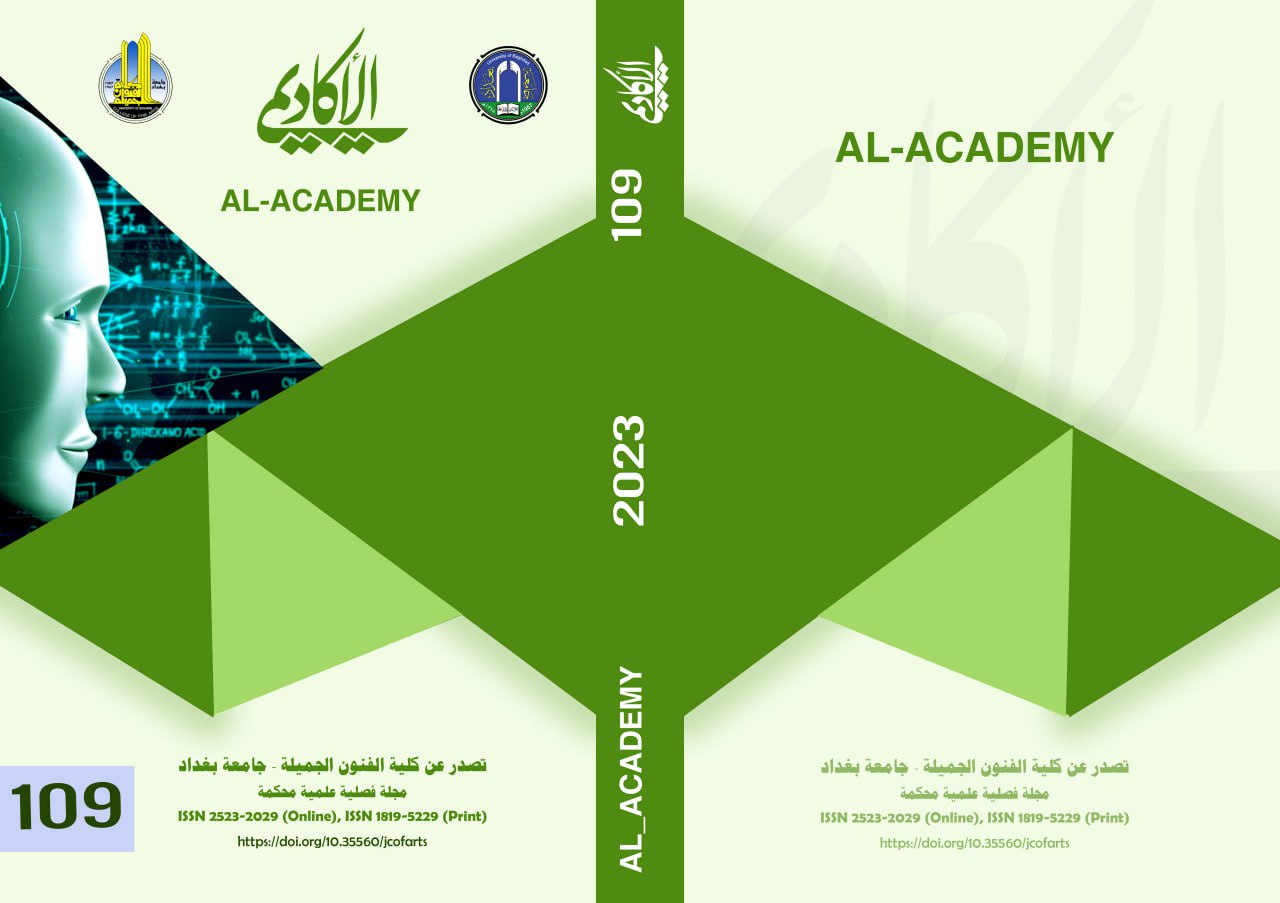The prestige of the state in the contemporary visual graphic discourse
DOI:
https://doi.org/10.35560/jcofarts1248Keywords:
prestige, state, discourse, contemporaryAbstract
The researcher assumes that there is a weakness in the prestige of the state in the contemporary graphic discourse, directed through the channels of digital and printed graphic design. And because the research is of great importance, whether on the theoretical or practical side, the prestige of the graphic discourse of the state and the government is related to the identity and strength of the visual authority of any state, and the feeling of pride, loyalty and belonging to it. The research aims to identify the reality of the state of visual prestige in contemporary graphic discourse. The researcher determined spatially / temporally / objectively by studying the prestige of contemporary graphic discourse in Iraq after the year 2003, and at the level of the three presidencies: the state, the government and the parliament. The theoretical framework dealt with the prestige of man before civilization, while in its second topic it dealt with the prestige of the Mesopotamian civilization, and the third topic dealt with the concept of prestige in contemporary graphic discourse. The researcher did not find previous studies in the field of his research. The methodology, community and research sample were identified, and the selected models were analyzed. The research came out with the most important results: The moral aspect of prestige is not achieved in the graphic discourse of the contemporary Iraqi state. The conclusions were: The state's prestige is achieved through visible material means in graphic design.
References
- Abadi, F. (2005). AlMuhet dictionary. Beirut: AlResalah Foundation.
- AbiDaher, A. (1993). People's customs and traditions. Al Shawaf Publishing House.
- AlAmin, M. (2007). Code of Hammurabi. London: Al-Warraq Publishing House Limited.
- AlMusawi, H. (2011). Architecture and its evolution throughout ancient history. Jordan: Dar Dijlah.
- AlRazi, M. (1986). Mukhtar AlSehah. Beirut: Lebanon Library.
- AlWaaely, F. (1986). Babylon Fashion. Baghdad: Directorate of Public Antiquities.
- Beals, R. L., & Harry, H. (1959). An introduction to anthropology. New york: Macmillan.
- Bquer, T. (2008). Gilgamesh Epic. Baghdad: Directorate of General Culture.
- Bquer, T. (2009). Introduction to the history of ancient civilizations. Baghdad: Al-Warraq Publishing House Limited.
- Guthrie, D. R. (2005). The Nature of Paleolithic Art. Chicago: University of Chicago Press.
- Jamalaldin, M. (2016). The state in the jurisprudential perspective. Iraqi Academic Scientific, 31. Retrieved from political-encyclopedia: https://political-encyclopedia.org
- Lewed, S. (1993). Antiquities of Mesopotamia from the Paleolithic Age to the Persian Invasion. Damascus House.
- Mardan, J. (1989). Abd al-Karim Qasim, The Beginning and the Fall. AlSharquia Library.
- Montagu, A. (1990). primitive. Kuwait: AlMaarefa World.
- Nikiforuk, A. (2012). The energy of Slaves: Oil and the new servitude. Greystone Books.
- Rogri, A. (2015, 3 6). art and culture. Retrieved from BBC News Arabic: https://www.bbc.com/arabic/artandculture/2015/03/150306_vert_cul_ancient_babylons_greatest_wonder
- Royal.uk. (2021). Union Jack. Retrieved from royal.uk: https://www.royal.uk/union-jack
- Taqoush, M. (2015). Modern and contemporary history of Iraq. Beirut: Dar AlNafaes.
- Weston, b. (2020, 2). north korea flaq, meaning and history. Retrieved from koryo group: https://koryogroup.com/blog/flags-of-the-world-north-korea-flag-north-korean-flag-meaning-and-history
- Wood, S. (2013, may). Prestige in world politics: History, theory, expression. Researchgate, pp. 1,2.
Official Website:
Downloads
Published
Issue
Section
License
Copyright (c) 2023 Ahmed Faisal Reshak

This work is licensed under a Creative Commons Attribution 4.0 International License.













